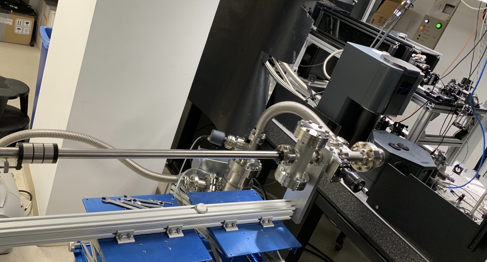Inelastic Light Scattering
When light is incident on a sample, noise in the system can result in inelastic scattering. So long as the noise couples to the optical properties, this Raman process allows us to measure magnetic, structural, or electronic excitations. By carefully studying the dependence on the polarization of the incident and scattered light, we can detect the symmetry of the mode, as well as its energy and lifetime. In addition, a comparison of the intensity of photons emitted by absorbing a mode (anti-Stokes) versus those that create the mode (Stokes) reveals the sample temperature and the breaking of time-reversal symmetry. Our group is pushing the boundaries of this technique by developing custom systems to study atomically thin, air-sensitive samples and devices. We are also developing a new time-resolved system for detecting quantum correlations and entanglement using the Raman process.

Pictured above is our low-temperature (10 K to 325 K) Raman microscopy setup, which allows materials to be brought in via vacuum suitcase. This instrument excites the sample with a 532nm laser pulse and can measure the Raman shift from 1meV to 750 meV. The Raman microscope can measure samples one atomic layer thick with cross-sectional areas of 1µm2. In addition, it has automated polarization of the incident and outgoing light, including linear and circular states, to measure the symmetry of the lattice and excitations.
Relevant Articles:
Axial Higgs mode detected by quantum pathway interference in RTe3 Nature 606, 896 (2022)
Evidence for dominant phonon-electron scattering in Weyl semimetal WP2 Physical Review X 11, 011017 (2021)
The range of non-Kitaev terms and fractional particles in α-RuCl3 Nature Quantum Materials 5, 14 (2020)
Low vibration high numerical aperture automated variable temperature Raman microscope Reviews of Scientific Instruments 87, 043105 (2016)
